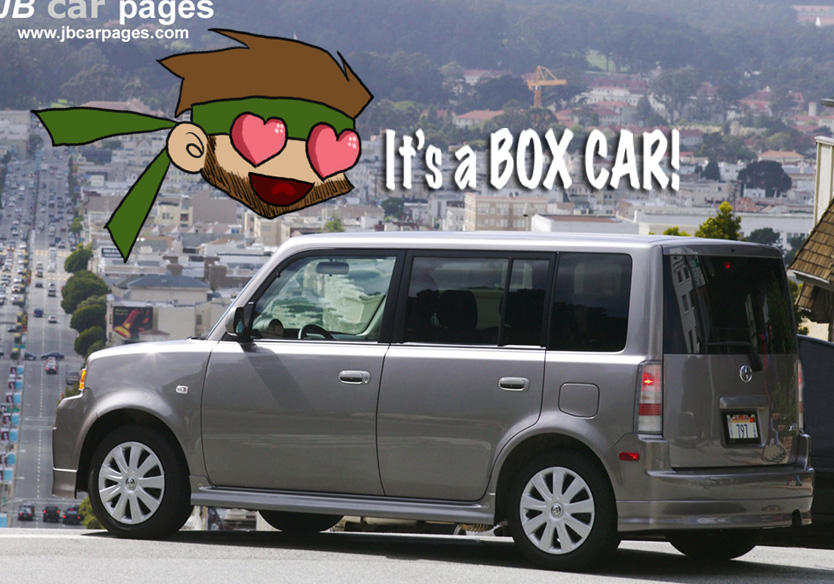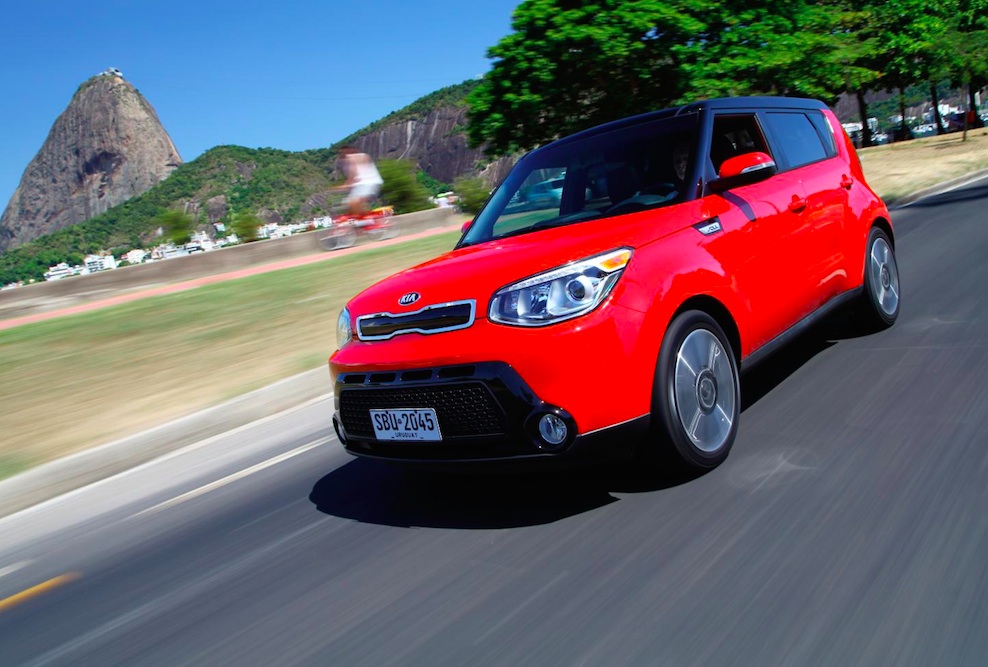A boxcar is a North American railroad car that is enclosed and generally used to carry general freight. The boxcar, while not the simplest freight car design, is probably the most versatile, since it can carry most loads. Boxcars have side doors of varying size and operation, and some include end doors and adjustable bulkheads to load very large items.
Similar covered freight cars outside North America are covered goods wagons and, depending on the region, are called "goods van" (UK), "louvre van" (Australia), "covered wagon" (UIC and UK) or just "van" (UIC and UK).

Use
Boxcars can carry most kinds of freight. Originally they were hand-loaded, but in more recent years mechanical assistance such as forklifts have been used to load and empty them faster. Their generalized design is still slower to load and unload than specialized designs of car, and this partially explains the decline in boxcar numbers since World War II. The other cause for this decline is the dramatic shift of waterborne cargo transport to container shipping. Effectively a boxcar without the wheels and chassis, a container is designed to be amenable to Intermodal freight transport, whether by container ships, trucks or trains, and can be delivered door-to-door.
Even loose loads such as coal, grain and ore can be carried in a boxcar with boards over the side door openings. Later grain transport would use metal reinforced cardboard which was nailed over the door and could be punctured by a grain auger for unloading. This was more common in earlier days; it was susceptible to losing much loading during the journey, and damaged the boxcar. It was also impossible to mechanically load and unload. Grain can also be transported in boxcars designed specifically for that purpose; specialized equipment and procedures are required to load and unload the cars. However grain is better transported in covered hopper cars.
Livestock can be transported in a boxcar (which was standard practice in the U.S. until the mid-1880s), but there is insufficient ventilation in warm weather. Specially-built stock cars or converted boxcars are preferable. Insulated boxcars are used for certain types of perishable loads that do not require the precise temperature control provided by a refrigerator car. Circuses used boxcars to transport their workers, supplies, and animals to get from town to town.
Box cars were used for bulk commodities such as coal, particularly in the Midwestern United States in the early 20th century. This use was sufficiently widespread that several companies developed competing box-car loaders to automate coal loading. By 1905, 350 to 400 such machines were in use, mostly at Midwestern coal mines.
Historically automobiles were carried in boxcars, but during the 1960s specially built autoracks took over; these carried more cars in the same space and were easier to load and unload. The automotive parts business, however, has always been a big user of the boxcar, and larger capacity "high cube" cars evolved in the 1960s to meet the auto parts industry's needs. Special boxcars carry newsprint paper and other damage-sensitive cargo.
While not holding the dominant position in the world of rail borne freight that they had before World War II, the boxcar still exists and is used in great numbers around the world.
Box Like Cars Video
Double door boxcar
A double door boxcar has two sliding doors on each side instead of one. Double door boxcars can be more convenient for household storage and passage uses. The double door feature gives the user a wider range of options than a standard one.
The Santa Fe car shown is called a Door and a Half car. They were used since the smaller opening did not require as much inside bracing. Used on PRR, N&W, B&O, WSS, CNJ railroads.

End door boxcar
An end door boxcar includes swinging doors on one or (less commonly) both ends to facilitate the loading of automobiles or other objects not easily loaded through a side door. These required clever engineering, as generally the ends of a boxcar provide the structural strength to carry the roof and to keep the structure stiff. This added cost, along with the difficulties of loading a rail car from the end, means they were less common than plain boxcars, although they usually also had side doors so they could be used as regular boxcars.

Hicube boxcar
In recent years "hicube" -- "high cubic capacity" -- boxcars have become more common in the USA. These are taller than regular boxcars and as such can only run on routes with increased clearance (see loading gauge and structure gauge). The excess height section of the car end is often painted with a white band so as to be easily visible if wrongly assigned to a low-clearance line.
The internal height of the 86-foot (26.21 m) hicube boxcars originally used in automotive parts service was generally 12 feet 9 inches (3.89 m).
X60 class
A very special Class of "high-cube" boxcar was the X60 class series 8 door type introduced in the mid-1960s on American railroads to haul bulky but light-weight automotive parts such as body panels and were a massive 86 feet in length.
At least one known car of this type survives today at the Pennsylvania Historical & Museum Commission, Railroad Museum of Pennsylvania, Strasburg, PA.
The car owned by the museum was built by Pullman Standard in their Bessemer, Alabama shops for the New York Central Railroad as one of an order of 30. It passed to the New York Central's successors Penn Central in 1968, and then Conrail in 1976. Conrail rebuilt and renumbered the car in 1986 and subsequently transferred it to their Philadelphia employee training center in the late 1990s for use as a teaching aid.
These cars are one of the rarest, largest and most difficult to find railway cars in the United States. Currently very little information about them exists. It is the only known mass-produced box car to have a total of 8 sliding plug type doors (4 on each side). Most have been scrapped and few, if any, remain in service today.

Passenger use
The boxcar has been used to carry passengers, especially during wartime. In both World Wars, French boxcars known as forty-and-eights (40/8) were used as troop transports as well as for freight; in World War II first by the French forces, then the German, and finally the Allied. The shared experience among Allied soliders spawned groups such as the Forty and Eight veterans organization. In addition to soldiers, the Germans transported prisoners in crowded boxcars during the Nazi regime, and an undisclosed number of German soldiers captured by the U.S. Army died of suffocation in American boxcars transporting them from the front-line to prisoner of war camps in March 1945. The same transportation was used by the Soviet Union during the 1930s and 1940s, when over 1.5 million people were transferred to Siberia and other areas from different countries and areas incorporated into the Soviet Union.
The United States used troop sleepers to ferry U.S. soldiers through North America during World War II. These cars were both based upon boxcars and intended to be converted into boxcars after the war was over.
Hobos and migrant workers have often used boxcars in their journeys (see freighthopping), since they are enclosed and therefore they cannot be seen by railroad-employed security men ("Bulls") or police, as well as being to some degree insulated from cold weather.
Preservation
One of the largest collections can be found at the Western Pacific Railroad Museum in California. The museum rosters over 30 boxcars, including several rare or unusual styles. The oldest dates from 1909, while several are from the 1960s and '70s.
Are You Looking for Products
Here some products related to "Boxcar".
Britax B-Safe Infant Car ..
The Limit: Life and Death..
Amazon.com : Thule 665C T..
Thule 682 Sidekick Roofto..
Get these at Amazon.com* amzn.to is official short URL for Amazon.com, provided by Bitly
Source of the article : here






EmoticonEmoticon